The Man You Should Really Thank For Mickey Mouse (And It Isn’t Walt)
The Walt Disney Company is something of a titan today and the innovation and principles on which it stands were originally crafted by a group of legendary visionaries.
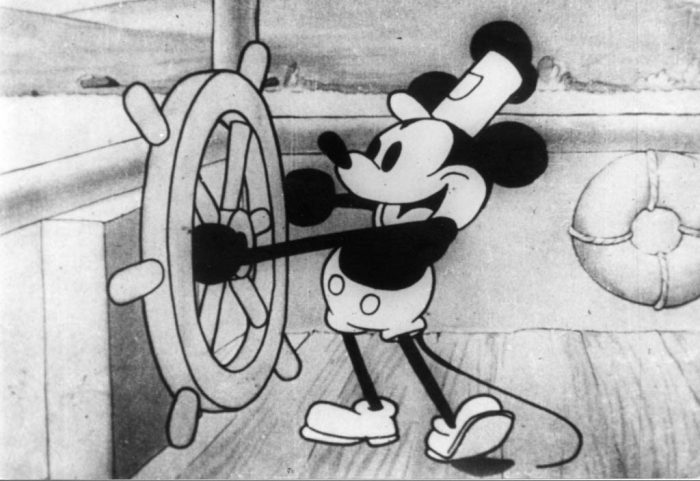
Steamboat Willie ©Disney
From multiplane cameras to audio-animatronics, Walt Disney and his team were integral in shaping the world of entertainment as we know it today. And you’d be hard-pressed to name a more iconic Disney creation than Mickey Mouse. We have one man, in particular, to thank for Mickey — and it’s not Walt Disney.
It’s easy to assume that Disney was the driving force behind Mickey Mouse, and in fact, that’s the story that you’ll often hear. However, that’s only partially true. The Mouse was a collaboration with Walt Disney guiding and a man named Ub Iwerks at the helm.
Where did Mickey Mouse come from?
So, let’s answer that BIG question: where did Mickey Mouse come from? Well, Mickey was NOT the original big character idea; there was another breakout character before him. There is no Mickey without the loss of Oswald the Lucky Rabbit.
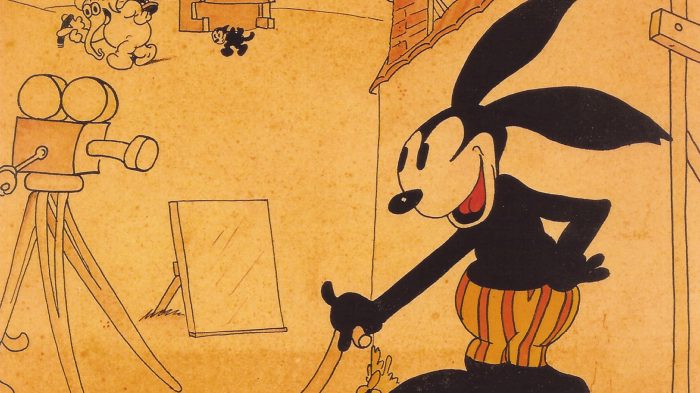
Oswald the Lucky Rabbit ©Disney
Oswald the Lucky Rabbit was Walt’s original big character concept but he ran into a few hiccups that kept him from being the Disney star that Mickey became. Walt Disney Studios was initially commissioned by Universal Pictures in 1927 to produce a series of animated shorts starring the brand-new Oswald character. He quickly became popular due to his full-fledged personality — a trademark feature for many of Iwerks’ characters.

Ub Iwerks ©Disney
Yep, Iwerks started with Oswald! Walt Disney and Ub Iwerks worked together to design the Lucky Rabbit cartoons for the Universal contract. As mentioned though, there’s a reason that Oswald isn’t still a Disney staple. The contract between Walt and Universal ultimately meant that the rights to Oswald the Rabbit belonged in the hands of Universal Pictures. Due to the success of Oswald, backdoor deals were made between Universal producers and Disney’s own animators to produce Oswald shorts without involvement from Walt or Iwerks.
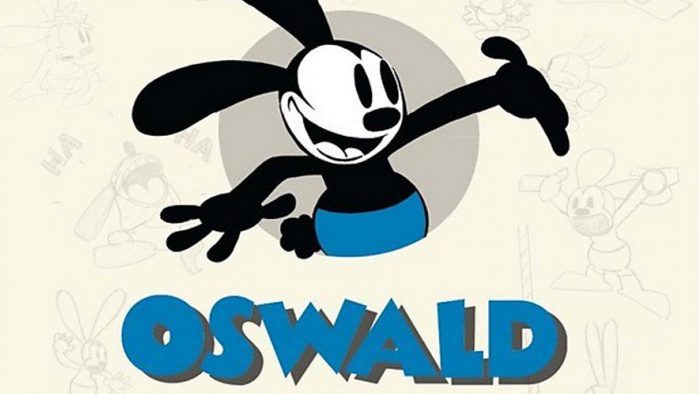
Oswald the Lucky Rabbit ©Disney
In the aftermath of this, many of Disney’s animators were hired away with Walt’s removal from the Oswald project, but Iwerks stayed on at Walt Disney Studios. After this, the two got to work on a new character with Iwerks drawing concepts for frogs, dogs, cats, a cow, and a horse but none of them fit the bill in Walt’s mind (Although you will see Clarabelle Cow and Horace Horsecollar made it to some shorts from this phase!).

Horace Horsecollar ©Disney
Where Mickey being a mouse came from is not 100% known. The famously told story goes that, around the time, Disney came up with the original Mickey sketch on the train back from his failed negotiations with Universal. The actual events don’t seem to be so black and white. Everyone’s story was a bit different. It seems the name Mickey was agreed upon on that train ride between Walt and his wife, Lillian. (She famously told him NOT to name him Mortimer and they settled on Mickey instead!) Walt had drawn mice before, but their proportions weren’t particularly visually appealing. At last, Iwerks got some inspiration from an old Hugh Harman drawing of mice he sketched around a photograph of Walt Disney.

©Disney
Take a close look at Iwerks’ design of Oswald and, after a few changes here and there, you might notice that rabbit and Mickey share a lot of similarities! Iwerks even noted that his original design could essentially be modified in smalls ways to make that base of a character into almost any animal. Disney worked closely with Iwerks who finalized the design into a refined original Mickey and thus, in secret, the Mouse was born. Interestingly enough, this whole process operated as Disney wrapped production on the final Oswald cartoons he contractually owed.

Ub Iwerks ©Disney
You can certainly thank Iwerks for Mickey as the first few Mickey Mouse cartoons were animated almost entirely by his hand, including “Steamboat Willie” and “The Haunted House.” To this day, many people think the early Mickey cartoons were made by Walt’s own hand, but it was really Iwerks time with pencil and paper that brought him to life. Remember that full-fledged personality that made Oswald popular? If Iwerks was working the pencil and paper, it was certainly Walt who supplied a lot of his personality. Mickey had his own signature disposition fueled by Walt Disney with Iwerks’ help which helped make him as popular as he was and is today.
Who was Ub Iwerks?
So, now you know why you should thank Ub Iwerks when you’re wearing your favorite Mickey hat or giving the Mouse a hug in the theme parks, but who was Ub Iwerks? Iwerks was an animator, cartoonist, character designer, inventor, and special effects technician — so, basically one of those visionaries we mentioned earlier.

Ub Iwerks ©Disney
Iwerks had a VERY close connection with Walt Disney. In fact, the two spent the majority of their careers together. They met in 1919 while working for the Pesmen-Rubin Art Studio in Kansas City and went on to start their own art business together. When Walt launched Walt Disney Studios, he brought Iwerks with him.

Ub Iwerks ©Disney
The two worked together smoothly for many years, but sometime after the creation of Mickey, Iwerks and Disney had a falling out. The final Mickey cartoon that Iwerks drew before leaving Walt Disney Studios was “The Cactus Kid” in 1930.

“The Cactus Kid” ©Disney
The next phase of Iwerks’ career saw him running a studio of his own name with his own characters but he never reached the point of rivaling the other studios. With the failure of his personal venture, he moved to contract work for some time before returning to work at Disney a decade after he had left.
From that point on, Iwerks continued to cement himself as a Disney Legend by working on special visual effects. For the studios, he developed the process for combining live-action and animation as seen in Mary Poppins and the xerographic process adapted for cel animation.
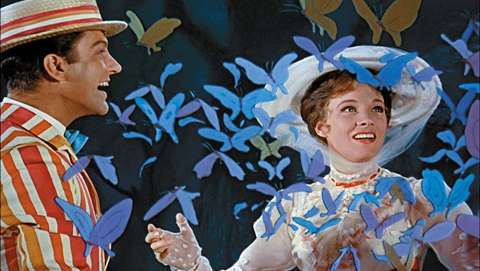
©Disney
He also had a hand in the theme parks! Working with Walt Disney Imagineering (then WED Enterprises), he had a hand in many of the Disney World theme park attractions developed in the mid-20th century.
Iwerks’ Other Achievements
It’s pretty amazing that Iwerks not only had a hand in creating one of the most beloved characters of all time, but he also crafted much of the technology and experiences we still cherish in cinema and theme parks today. Let’s take a look at a few of his other achievements!
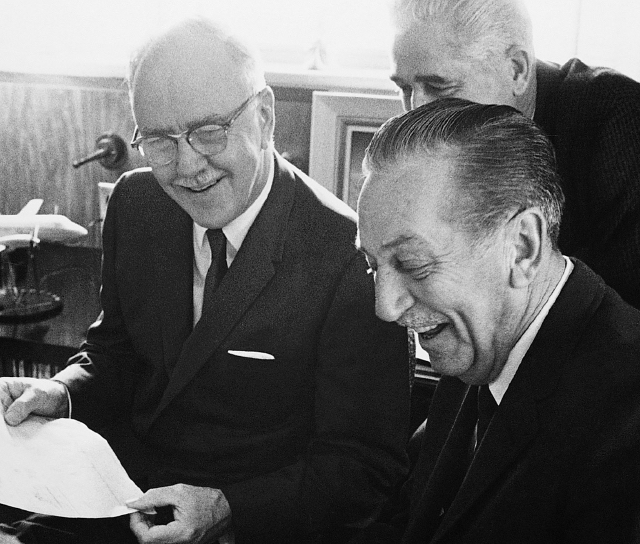
©Disney
Iwerks invented the wave projector used to make the Nautilus feel underwater in the 20,000 Leagues Under the Sea Attraction and the lighting effect used to give the illusion of burning spinning wheels in the Sleeping Beauty Castle walkthrough.
He also developed a circular camera and surround projection system. If that sounds familiar, it’s because CircleVision 360 technology was built on the base that Iwerks developed! Now, you can see CircleVision films at EPCOT and other Disney parks. Next time you’re taking in Wonders of China or Canada Far And Wide, thank Ub!

Ub Iwerks ©Disney
In the 1960s, Iwerks was the mind behind putting moving faces on static objects for the Haunted Mansion. He developed the tech that would allow Madame Leota to appear in her crystal ball, the tiny bride (affectionately known as “Little Leota”) to bid guests goodbye at the end of the ride, and for the singing busts to croon their sweet, sweet harmonies.
And, Iwerks finished his innovating career by conquering the challenge of projecting a film on a 200-foot screen. Projectors can only cover SO MUCH space, right?! The answer? Five adjoining projections. And that problem-solving brought us the historic Hall of Presidents that you can see in Disney World today!

Hall of Presidents
Now when you see his window on Main Street, U.S.A. you’ll know a bit about him and understand the reference for cameras and modifications on his window. Oh, and that Don Iwerks that shares the same window? That’s his son. He went on to follow in his dad’s footsteps, becoming a Disney Legend as well. He worked alongside his dad on many of the projects Ub was famous for in the parks. Don worked on many of the Circle-Vision shows in EPCOT as well as Captain EO.
It can sometimes be easy to forget that The Walt Disney Company was built by more than just its namesake. Ub Iwerks was a pillar of the company then and remains a legendary figure now. After all, what would Disney be without Mickey Mouse? And Mickey Mouse would not exist as he does today without BOTH Walt Disney and Ub Iwerks.
Want to learn what happens when the copyright on Mickey Mouse expires, click here!
Join the DFB Newsletter to get all the breaking news right in your inbox! Click here to Subscribe!
Don't Miss Out on Any Disney Fun!
Order Your Copy of the 2021 DFB Guide to Walt Disney World Dining Today!
 With more than 750 pages, the 2021 DFB Guide to Walt Disney World Dining is full of tips and planning tools developed by Disney World experts over 30+ years of visits. We've done the research for you, so you'll know just which spots will uniquely suit your family's needs!
With more than 750 pages, the 2021 DFB Guide to Walt Disney World Dining is full of tips and planning tools developed by Disney World experts over 30+ years of visits. We've done the research for you, so you'll know just which spots will uniquely suit your family's needs!With mini-reviews of every single restaurant, bar, lounge, kiosk and more; an entire chapter on the best snacks in Disney World; full Disney Dining Plan analysis (and how to get FREE dining); and a full chapter on discounts and deals; you'll have everything you need to plan your best vacation yet.
Click here to order your copy of the 2021 DFB Guide to Walt Disney World Dining E-book with code WDW2021 to save 25% off the cover price today!
Use code WDW2021 at check-out for 25% off the cover price today!
Our guides are backed by a 100% money-back guarantee, so you have nothing to lose.

Did you know about Ub Iwerks’ accomplishments? Tell us in the comments!
The post The Man You Should Really Thank For Mickey Mouse (And It Isn't Walt) first appeared on the disney food blog.
from the disney food blog https://ift.tt/2WIU7y5


Post a Comment